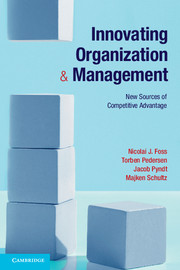Chapter 2 - Causes of firm success
From resources to organization and management
Published online by Cambridge University Press: 05 June 2012
Summary
Introduction
Given our concern with the ways in which organization and management contribute to corporate success, we find ourselves squarely in the universe of strategic management. Fundamentally, strategic management is about coordinating activities related to the delivery of value to customers in a way that is not only supportive of success but also different from the competition – perhaps even unique. In fact, the former (success) is largely derived from the latter (differentiation). While strategists and strategic management academics may agree on this basic view, there are numerous paths to differentiation and success may be assessed in a variety of ways. In this chapter, therefore, we briefly survey some of the key ideas on superior firm performance, heterogeneity, and strategic management that have emerged in recent decades.
Specifically, we discuss a range of perspectives on how resources and capabilities contribute to competitive advantage, and argue that such ideas need to focus more on understanding the interplay between resources and capabilities on the one hand and organization and management on the other. We show that: (1) The organizational design and management processes of a firm may be a distinct resource for that firm; and that (2) improvements and changes in these factors may contribute to sustaining competitive advantages; not least because (3) they may assist in the process of building new strategic resources and capabilities.
- Type
- Chapter
- Information
- Innovating Organization and ManagementNew Sources of Competitive Advantage, pp. 15 - 40Publisher: Cambridge University PressPrint publication year: 2012



